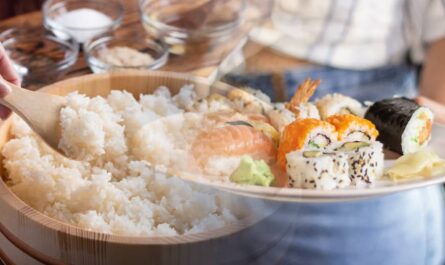The evolution of sushi preparation tools has greatly influenced how sushi is made and enjoyed today. From ancient knives to modern gadgets, this evolution offers a glimpse into cultural traditions and advancements. Understanding this journey not only enhances our appreciation for sushi but also deepens our respect for the chefs who skillfully use these tools.

History of Sushi Origins and Early Tools
Sushi has a rich history dating back over a thousand years, originating from Southeast Asia. Early methods of fermentation involved using rice to preserve fish, and this crucial preservation process required basic yet effective tools.
The Traditional Sushi Knives
Sushi knives have been fundamental in the art of sushi. The early knives were simple yet effective for cutting raw fish and preparing vegetables. The Yanagiba knife, specifically designed for slicing fish, allowed chefs to make delicate cuts essential for sashimi.
Evolving Knife Designs
As sushi evolved, so did knife designs, including the addition of Usuba, designed for vegetables, and Deba, meant for cutting through bones. The variations in knife designs were influenced by regional preferences in Japan.
The Role of Technology in Sushi Preparation
With technological advances, modern sushi preparation tools like electric rice cookers and rolling machines significantly changed traditional methods. These tools allow for consistency and efficiency, making sushi-making accessible to more people.
Introduction of the Bamboo Mat
The bamboo mat, or Makisu, revolutionized sushi rolling. This simple yet ingenious tool enabled chefs to roll sushi tightly and evenly, ensuring consistent quality and appearance. You can learn how to care for your bamboo mats for longevity.
Bamboo to Plastic: A Modern Shift
Today, some chefs use plastic mats as an easier-to-clean alternative. Each mat type offers different benefits based on the chef’s preference and the style of sushi they are creating.
Hangiri: The Wooden Bowl Icon
A Hangiri is essential for cooling and seasoning sushi rice. Made from cypress wood, this bowl aids in absorbing excess moisture while imparting a subtle aroma. Curious about using this tool effectively? Discover more about a Hangiri and its role.
Maintaining the Hangiri
Proper care is crucial for a Hangiris longevity since improper care can lead to cracks and reduced effectiveness.
Onigiri Molds and Rice Ball Makers
Onigiri, or rice balls, are popular in Japanese cuisine. Traditionally shaped by hand, modern onigiri molds offer a convenient way to create perfect shapes every time. Want to try your hand at it? Learn how to use onigiri molds.
Modern Sushi Gadgets and Innovations
Innovations like electric sushi roller machines and sushi presses have introduced efficiency to traditional methods without compromising the quality. While some purists prefer hand-making, these devices aid large-scale production.
Pros and Cons of Modern Tools
While modern tools bring speed, they may shift away from some traditional techniques that emphasize craftsmanship and skill.
Tools of Precision: The Sharpening Stone
Maintaining a sharp sushi knife is vital; hence, a sharpening stone is indispensable. Regular sharpening ensures precision cuts, dramatically affecting the sushi’s taste and presentation.
FAQ Section
What is the primary tool for making sushi? The primary tool is the knife, particularly the Yanagiba, known for its precision in slicing fish.
How have sushi tools evolved over time? Sushi tools have evolved from basic knives to include electric rice cookers and rolling machines, streamlining the preparation process.
Why is a Hangiri used in sushi preparation? The Hangiri helps in cooling and seasoning rice, absorbing excess moisture, and imparting a subtle aroma.

Conclusion
The evolution of sushi preparation tools reflects changes in culinary practices, cultural influences, and technological advancements. As sushi continues to gain global popularity, these tools remain integral to the art of sushi making, bridging traditional techniques with modern innovations. Dive deeper into the delightful world of sushi preparation and explore more about sushi etiquette to enhance your experience.
This article contains affiliate links. We may earn a commission at no extra cost to you.


